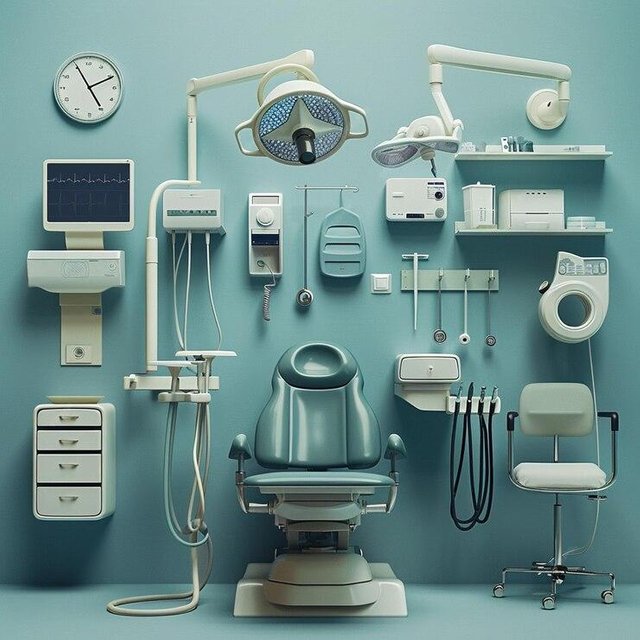The U.S. Medical Devices Market (2024-2032): Current Trends, Growth Drivers, and Future Potential
The U.S. medical devices market is a dynamic and rapidly evolving sector of the healthcare industry, playing a crucial role in enhancing patient care and driving technological advancements. In 2023, this market was valued at USD 180.22 billion and is projected to grow at a 6.6% compound annual growth rate (CAGR), reaching USD 314.96 billion by 2032. This growth is fueled by the increasing demand for innovative medical technologies and the nation's strong healthcare infrastructure. For a comprehensive look at market dynamics, check out the full report here: U.S. Medical Devices Market Analysis.
Get More Insights and FREE Report Sample: https://www.fortunebusinessinsights.com/u-s-medical-devices-market-107009
Key Market Drivers:
Rising Demand for Advanced Diagnostic and Treatment Technologies
The increasing prevalence of chronic illnesses such as cardiovascular diseases, diabetes, and respiratory conditions has heightened the demand for advanced diagnostic and treatment devices. As patients seek personalized care solutions, the market has responded with innovations in minimally invasive surgeries, real-time monitoring devices, and AI-driven diagnostics. The surge in demand for such technology directly impacts the growth of the medical devices market in the U.S.
Telemedicine and Remote Patient Monitoring
Remote patient monitoring has transformed healthcare, especially after the COVID-19 pandemic. Devices that allow patients to monitor vital signs such as blood pressure, blood glucose levels, and oxygen saturation from home have seen widespread adoption. Telemedicine has similarly allowed healthcare providers to reach patients beyond traditional clinical settings. Both trends have contributed significantly to the rise in medical devices demand and are expected to continue shaping the industry in the future.
Technological Innovations
Innovation remains a core driver of the U.S. medical devices market. The integration of artificial intelligence (AI) in diagnostics, robotics in surgery, and smart wearable devices has revolutionized healthcare. These technologies allow for early detection, precise treatment, and real-time monitoring, greatly enhancing patient outcomes. Companies are increasingly investing in research and development (R&D) to create next-generation devices that push the boundaries of what is possible in healthcare.
Favorable Regulatory Environment and Government Support
The regulatory environment in the U.S. is highly supportive of the medical devices industry. Agencies such as the FDA have established expedited approval pathways, particularly for breakthrough devices. Moreover, government investments in healthcare R&D create a favorable environment for device manufacturers, encouraging them to innovate and expand their product offerings to meet evolving patient needs.
Market Segmentation and Key Sectors:
The U.S. medical devices market includes a wide array of products, with some of the prominent sectors including:
Diagnostic Imaging Devices
Technologies such as MRI, CT scans, and ultrasound machines are continually advancing, providing physicians with more accurate diagnostic capabilities. This segment has experienced significant growth as new applications are developed for early detection and monitoring.
Orthopedic Devices
Orthopaedic devices, including joint replacement, fracture repair, and spinal devices, are in high demand, especially with the aging population in the U.S. Many patients seek advanced solutions for mobility issues, contributing to the growth of this market segment.
Cardiovascular Devices:
With cardiovascular diseases remaining a leading cause of death in the U.S., there is a high demand for devices that support heart health. This includes pacemakers, stents, and defibrillators, as well as emerging technologies that provide non-invasive solutions for heart monitoring.
Minimally Invasive Surgical Devices
Devices that support minimally invasive procedures, such as laparoscopes, have gained traction in the U.S. market. These procedures are increasingly preferred due to shorter recovery times and lower risks of complications, leading to a greater focus on technological advancements in this sector.
Challenges Facing the Market:
While the U.S. medical devices market shows significant growth potential, it faces challenges that could impact expansion. These challenges include:
High Cost of Advanced Devices
The cost of high-tech medical devices can be a barrier, limiting accessibility for certain patient groups. While insurance coverage has improved, the cost factor continues to pose a challenge, especially for patients with limited financial resources.
Strict Regulatory Requirements
Although the FDA offers fast-track approvals, the regulatory pathway for medical devices is stringent and often involves time-consuming processes. Device manufacturers must adhere to strict quality control measures, which can delay product launch timelines.
Data Privacy and Cybersecurity Concerns
As devices become increasingly connected, there is a growing risk of data breaches. Ensuring data privacy and cybersecurity for patient information has become a top priority, particularly with the rise of wearable medical technology and IoT-connected devices.
Future Trends and Opportunities:
AI and Machine Learning in Medical Devices
The role of AI in diagnostics and patient monitoring is expected to grow. AI can enhance diagnostic accuracy, predict health outcomes, and provide personalized treatment recommendations. The increased adoption of AI-driven devices will likely contribute to continued growth in the U.S. medical devices market.
Wearable Technology and Remote Monitoring
Wearable devices are increasingly integrated into routine healthcare, allowing for continuous health monitoring. The data collected by these devices provides valuable insights that can aid in preventive care and chronic disease management.
Biocompatible and Sustainable Materials
Medical device manufacturers are focusing on developing biocompatible materials that improve patient safety and reduce environmental impact. Sustainable practices are gaining traction as companies strive to balance innovation with environmental responsibility.
Growing Role of 3D Printing
3D printing technology is creating new opportunities for customized medical devices. In orthopedics, for example, personalized implants can be produced, leading to better patient outcomes. This technology also enables faster prototyping, reducing the time-to-market for new devices.
Conclusion:
The U.S. medical devices market is poised for robust growth, driven by technological innovations, increased demand for remote monitoring, and an aging population. With a projected growth rate of 6.6% CAGR from 2024 to 2032, the market’s future appears bright. Despite challenges such as high costs and regulatory hurdles, ongoing advancements and supportive policies are likely to sustain this upward trajectory.
To explore more on the market’s outlook and latest trends, check out the full U.S. Medical Devices Market Report.
